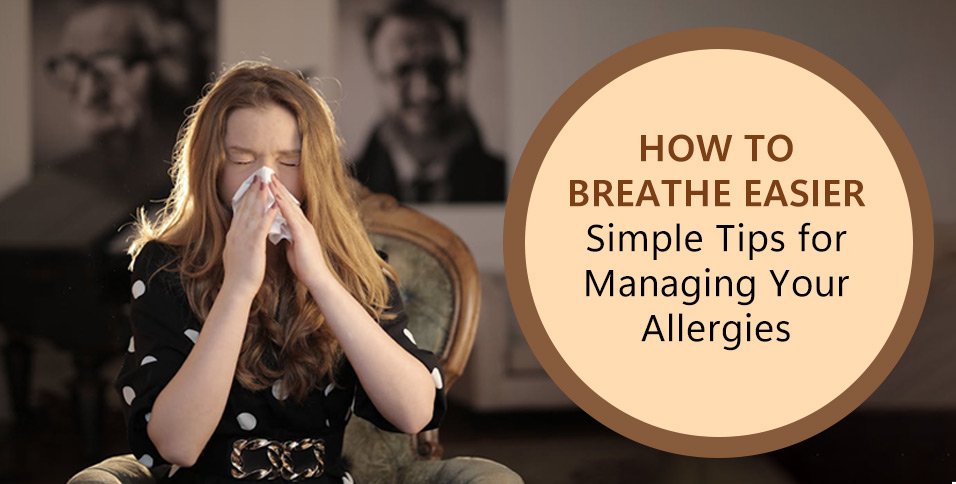Indoor allergies are a year-round issue for many people across the United States. From spring pollen drifting indoors to winter dust buildup, allergens can impact how you feel in your own home. Common triggers like pet dander, mold, and dust mites often go unnoticed until symptoms start to show—stuffy nose, itchy eyes, sneezing, or even fatigue.
While medications help some, others are looking for ways to reduce their symptoms without relying on pills or sprays every day. For many households, the solution starts at home—with cleaner air, healthier products, and better daily habits.
Living with allergies doesn’t mean you have to give up comfort. How to Breathe Easier: Simple Tips for Managing Your Allergies
Start With Healthier Home Habits
One of the most effective ways to lower allergy symptoms is to keep your home clean, but the type of cleaning products you use matters. Many store-bought options include harsh chemicals, synthetic fragrances, and preservatives that can actually trigger allergy symptoms or make them worse.
When you clean with products that contain these ingredients, you may reduce visible dust or bacteria, but you could also be adding new irritants into the air. That’s why more people are switching to plant-based or naturally derived cleaners that support cleaner air rather than harm it.
For example, Melaleuca: The Wellness Company offers a wide range of wellness and household products made with naturally sourced ingredients. These products are formulated with safer cleaning agents that work well without filling your home with strong scents or chemical residue.
With the help of products from Melaleuca USA residents can switch to gentler cleaning options that support better air quality without adding irritants to their home environment. From multi-surface sprays to laundry solutions, these options are designed to work with families looking for a cleaner, more allergy-friendly lifestyle.
Making this switch doesn’t just help with allergy symptoms. It can also benefit anyone who wants a more breathable home with fewer synthetic chemicals in daily routines.
Improve Indoor Air Quality
Cleaning is just one part of the picture. Good air quality plays a big role in managing allergies. Stale air, poor ventilation, and buildup of airborne particles can all lead to discomfort, even in homes that look tidy.
Start by increasing airflow. When weather allows, open windows to bring in fresh air. Use exhaust fans in the bathroom and kitchen to remove moisture and airborne particles. Avoid smoking indoors and reduce the use of strong-smelling candles or sprays, which can add to respiratory irritation.
Adding a portable air purifier with a HEPA filter helps trap allergens like pollen, dust, and pet dander. It’s also a good idea to check your HVAC system. Change the air filters every one to three months and consider using filters that are labeled for allergy or asthma control.
These changes support a healthier living space and make your home a better place to breathe.
Tackle Common Allergy Triggers Room by Room
Every room in your home can hold allergy triggers. Managing them one space at a time makes the process more doable and effective.
In the bedroom, focus on bedding. Use pillow and mattress covers made to block dust mites. Wash your sheets, pillowcases, and blankets in hot water every week. Choose pillows and comforters made from hypoallergenic materials that don’t trap allergens as easily.
In the living room, carpets, curtains, and upholstered furniture collect dust and dander over time. Vacuum these areas regularly using a vacuum with a HEPA filter. If possible, swap out thick rugs for low-pile options or hard flooring, which are easier to clean. Keep pets off furniture where possible, and consider using covers that can be washed often.
In the bathroom, moisture can lead to mold growth. Run the exhaust fan during and after showers, and clean any visible mold from tiles or grout right away. Keep shower curtains clean and dry, and store items like sponges and loofahs in dry areas. If your bathroom tends to stay damp, a small dehumidifier can help bring the humidity down to a safer level.
In the kitchen, wipe down surfaces regularly to prevent mold and crumbs from attracting pests. Fix leaks under sinks or behind appliances as soon as you notice them. Store dry goods in sealed containers and take out the trash daily. These small habits can make a big difference.
Establish Consistent Cleaning and Lifestyle Habits
Consistency matters. While deep cleaning once in a while is helpful, daily and weekly routines are what truly reduce indoor allergens over time.
Remove shoes at the door. Shoes carry pollen, dirt, and other outdoor particles that easily spread across floors. Set up a spot near the entrance for shoes and coats to help limit what comes into your living space.
Change your clothes after spending time outdoors, especially during high pollen seasons. Doing laundry regularly using fragrance-free detergents can help avoid skin irritation or sneezing fits triggered by residue.
Groom pets often to cut down on loose fur and dander. Brushing them outside and wiping their paws before they come inside keeps your floors cleaner. Bathe them with gentle pet shampoos when needed.
Use natural air fresheners or open windows instead of sprays or plug-ins with synthetic fragrances. These often add to airborne irritants. Houseplants can also support air quality, but choose varieties that don’t produce pollen or trap dust easily. Wipe leaves with a damp cloth every week to keep them clean.
It also helps to set a schedule for replacing air filters, vacuuming, and washing linens. Keeping a simple routine makes allergy control easier and more manageable.
Living with allergies doesn’t mean you have to feel uncomfortable in your own home. By making thoughtful changes in how you clean, what you bring indoors, and how often you stay on top of tasks, you can create a space that supports better breathing every day.
The habits may seem small, but together they make a real difference. With a little planning and consistency, you can turn your home into a place where allergy symptoms don’t stand in the way of rest, comfort, or daily life.



















